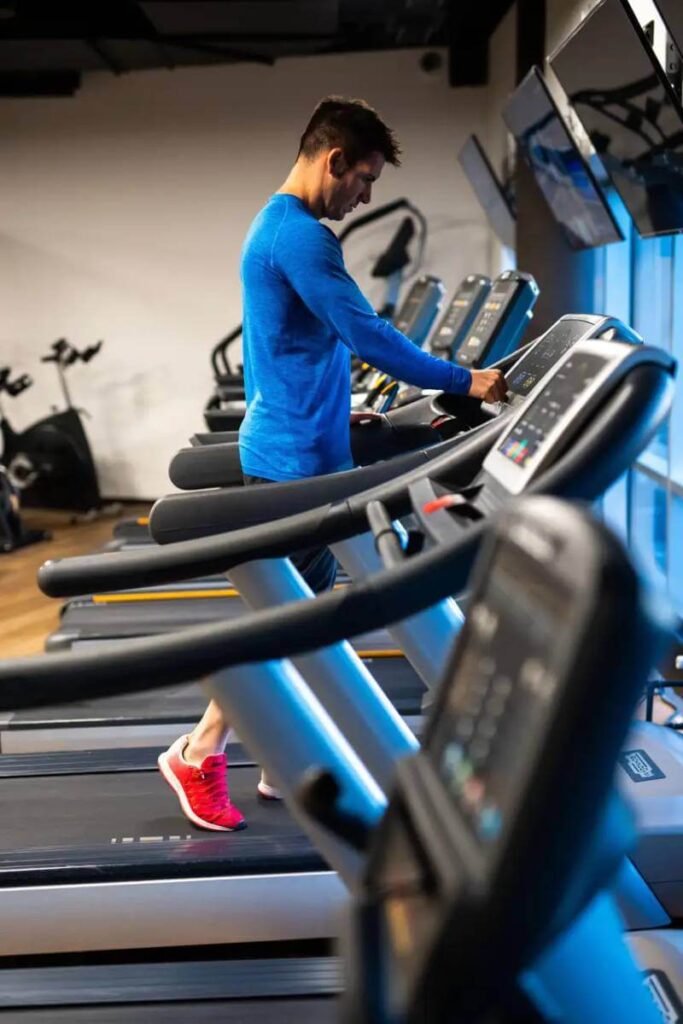There are so many ways to be active – but how do you know if you’re getting enough of the right type of exercise? Does a gentle walk count, or do you need to be pushing limits and doing ultra-endurance challenges and gruelling HIT classes five times a week?
According to the latest research, when it comes to reaping health benefits, aiming for more moderate intensity exercise could be best.
Researchers from Cambridge University and Leicester University analysed data from more than 88,000 middle-aged adults – monitoring and calculating their activity volume and intensity, and following up on their health for an average period of 6.8 years after.

They found a higher total physical activity volume was strongly associated with a decreased cardiovascular disease risk. This risk was even lower (14 per cent lower) when moderate to vigorous exercise made up 20 per cent, rather than 10 per cent, of someone’s total physical activity.
Overall, lowest cardiovascular disease rates were seen in participants who undertook higher levels of physical activity and a higher proportion of at least moderate intensity exercise.
Read: How exercise can give you a better night’s sleep
What does moderate exercise really mean?
As the word suggests – this isn’t extreme exertion, but nothing too easy either.
“Moderate refers to the intensity, which is how difficult exercising feels to you. People doing moderate exercise should aim for around a seven out of 10 in terms of effort,” says Chris Ruxton, a personal trainer working with Deep Heat and Deep Freeze.
So, your muscles and heart rate are being pushed. But not pushing yourself too hard could allow you to work out more often – and actually enjoy the workouts more and hopefully have fewer injuries.
“Moderate exercise is great if you don’t have a lot of time to spend on fitness,” Mr Ruxton adds. “Perhaps your goal is general health and wellness, rather than training for a specific sport or trying to build strength. It is also great if you’re coming back from a period of injury, pregnancy or just time away from fitness, or you are older.”
How much moderate exercise should we be doing?
According to federal government health guidelines, adults aged between 18 and 64 should be active most days of the week, for a total of between 2.5 and five hours (150 and 300 minutes) of moderate exercise, or between 1.25 and 2.5 (75 and 150 minutes) hours of high-intensity exercise.
For Australians aged 65 and over, the recommendations are at least 30 minutes of moderate physical activity most days.

“I recommend exercising three times a week for 30 to 45 minutes each time,” says Mr Ruxton. “Two of these sessions should be full-body workouts, with a combination of some cardio and strength training. This means one or two exercises per muscle group – such as squats, deadlift and lunges for legs and glutes, sit-ups and plank for core, press-ups and weighted exercises for the arms, shoulders and back.”
By combining strength and cardio, your overall health and fitness will benefit and you’ll get more bang for your buck from moderate workouts.
Read: Does exercise really lower your risk of dementia?
What types of exercise are moderate intensity?
In theory, any form of exercise can be classed as moderate if you do it at a moderate pace and level. Here’s Mr Ruxton’s take on some key examples.
Cycling
Mr Ruxton suggests aiming for a “steady pace on a flat road, or 7/10 effort on a stationary bike”. You want to feel like you’ve just had a workout – but not be facing down the toughest hills of your life or trying to smash a speed record.
Swimming

“Certain strokes, such as front crawl, will increase your heart rate quickly, so alternate between a length of crawl and a length of breaststroke,” suggests Mr Ruxton. “The intensity should be high enough that you need to increase your breathing.”
Read: How to overcome these common barriers to exercise
Jogging
How moderate going for a run feels may depend on your individual base fitness. Mr Ruxton says: “Start with a brisk walk to warm up, then increase the pace until you are sweating slightly and it’s becoming slightly difficult to hold a conversation. At no time should you be gasping for air.”
Weight training
When it comes to working out with weights, Mr Ruxton says “moderate means higher reps with a lower weight. This is not time for a one-rep max or heroic lifts. Pick a weight that you can move well for 10–12 reps – the last two to three should be seven out of 10 effort.”
Do you meet the exercise guidelines? What’s your favourite way to get moderate exercise every day? Let us know in the comments section below.
– With PA

